|
BULB LOG 25 21st June 2007
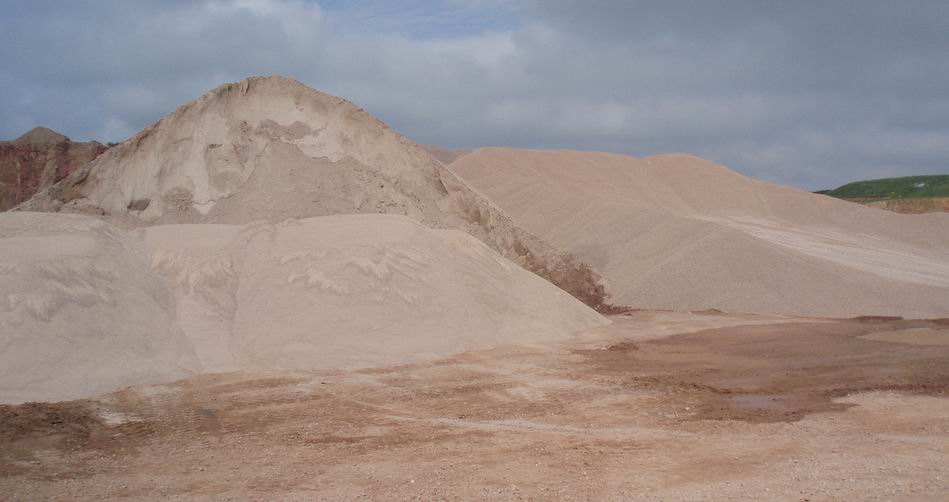
Sand and Gravel
At this time of year, as we are approaching repotting time, my thoughts turn towards potting compost ingredients like sand and gravel. Unfortunately this is not my own supply this is the quarry where I get my gravel from - the nearest heap is a nice sharp gritty sand and the one behind and to the right is 6mm grit.
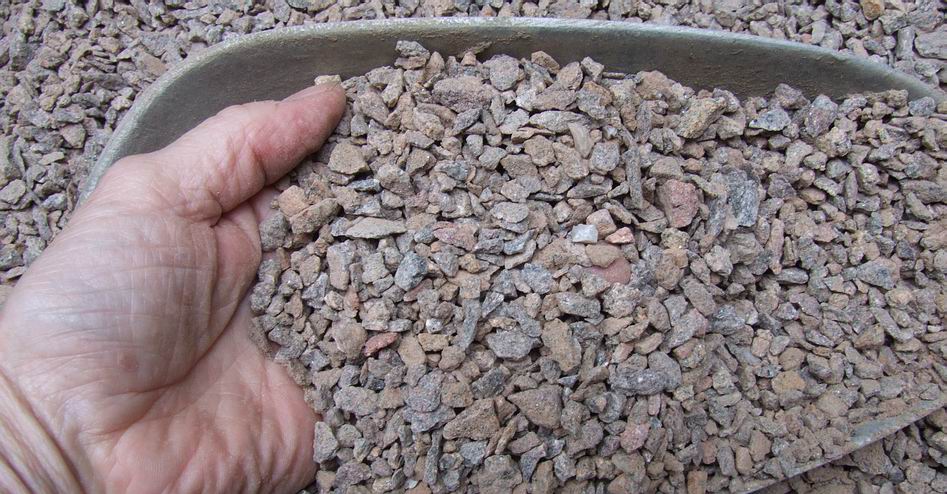
6mm gravel
6mm gravel is one of the most important ingredients in my potting compost as it keeps the compost mix open so that even when it is flooded the water can quickly drain away leaving a good moist compost. The other essential factor for healthy roots and plants is air in the compost and the addition of 6mm grit allows air pockets to form within the mix so the roots can breathe. This grit that I get is crushed rock that is graded into various sizes of gravel by the quarry for use in road surfaces etc. There is lots of fine rock dust mixed through which is undesirable for some of the uses that the quarry put it to but is essential for my needs. Freshly crushed rock with a lot of fine dust is full of elements that are essential to the long term health of our plants and gardens. When someone makes a brand new garden in ground that has not been intensively cultivated before, their plants are very healthy and grow beautifully but the longer we garden in the same spot, the more problems and diseases we start to see appe
aring. In past times early cultivators recognised this and moved on after a few years using what we refer to as the slash and burn method - burning out the scrub and trees to clear some ground to grow the crops and after a few years, when the crop yield starts to drop, move onto to new ground. We cannot do this nowadays so we must look into keeping our soils healthy. There are two things that start to get depleted in our gardens; one is the organic matter content of the soil. This is especially seen in very tidy gardens where the gardener continually cuts back and tidies away all decaying foliage and leaves, often removing them from the garden completely. All these decaying leaves and stems contain many of the trace elements that have been taken up by the plants and gradually through the years the soil becomes deprived of these elements. Composting all your garden waste and fallen leaves and applying it as mulch or digging it back into the soil is one way to keep your soil and plants healthy.
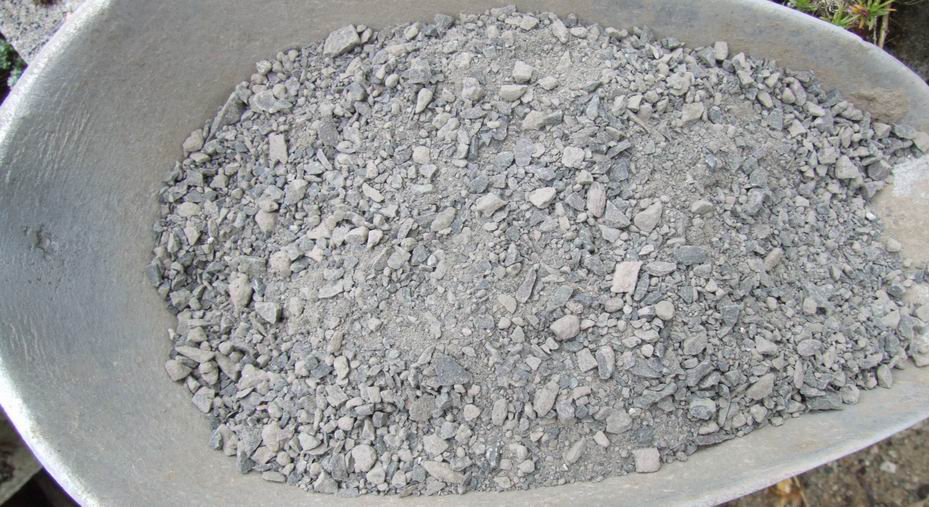
Rock dust
This organic content of the soil is one part of the equation, another part is the mineral content - gradually over the years of intensive cultivation in our gardens these minerals are used up. In the mountains rocks are continually being broken down by weathering and this process slowly releases the minerals into the soils and so makes them available to the plants. These minerals, trace elements, are the equivalent to the vitamins which help keep our bodies healthy and able to fight infection and attack from diseases. We can live on food sources that provide protein and carbohydrates but without the vitamins we would soon start to succumb to a whole host of health problems. Similarly, plants will grow provided they have nitrogen, phosphorous and potassium but without the trace elements they too will succumb to a host of problems. For centuries quarry workers would take home granite dust, a waste product, to spread on their vegetable and flower gardens - they recognised the benefit it provide but did not nece
ssarily understand the science behind it. Now studies and trials have been conducted and the benefits of applying rock dust have been rediscovered. The rock dust shown above is a new product to the market that is made from crushing volcanic rocks from various sources in Scotland and it is being marketed as an organic additive to improve the fertility of soils and compost mixes. Basically it supplies the elements that allow the soil fauna from microbes up to worms to thrive and help the process that lets our plants absorb these elements and so stay healthy. The rock dust that comes with my gravel brings many of these elements but this year I am experimenting to see if I can detect an additional benefit from adding some of this volcanic rock dust to my mixes. I will also be spreading it around selected areas of the garden to remineralise my tired soils. I do not think you get the same benefits from using river or pea gravel - it needs to be freshly crushed rock. Neither am I sure if flint grit has the range of
minerals found in granite and volcanic rocks.
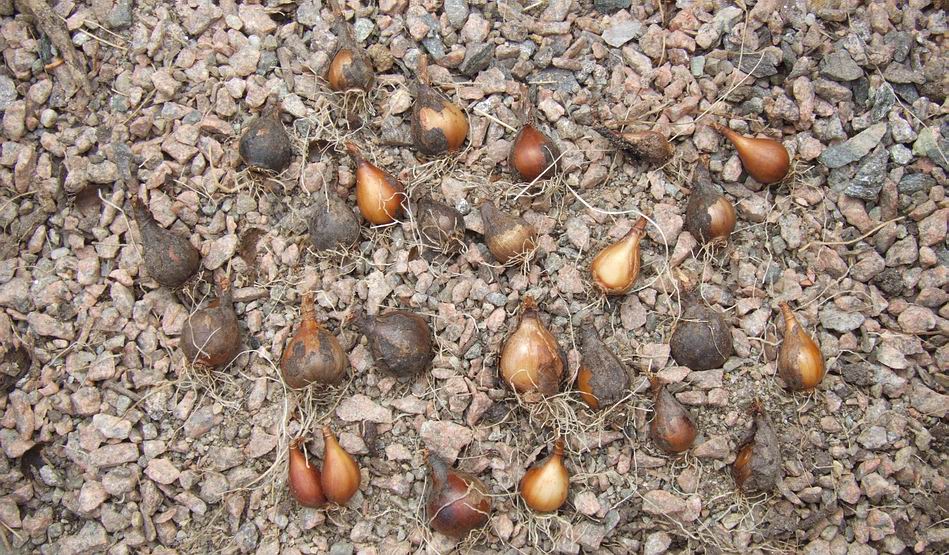
Narcissus bulbs grown in sand mix
Last year I told you that I had almost run out of my supply of loam for my potting mix so I was trialling a mix where I replaced the loam with sand, two parts sand, two 6mm gravel and 1 leaf mould. This is a pot full of narcissus bulbs that were grown in that mix and they have grown every bit as well as the control pot of my normal loam mix so I have some confidence to extend this trial to many more pots this year.
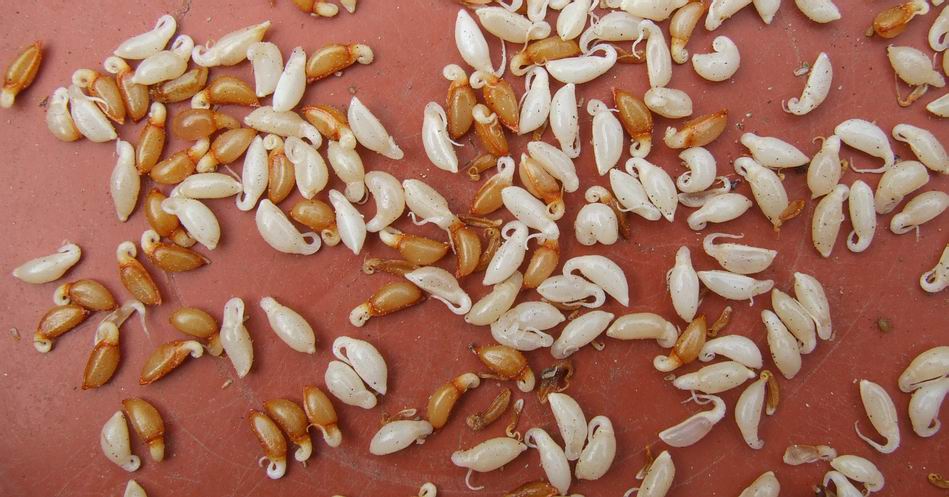
Erythronium dens canis seed
The very distinctive seeds of Erythronium dens canis with the fleshy attachments, eliasomes, that have evolved to encourage ants to distribute the seeds.
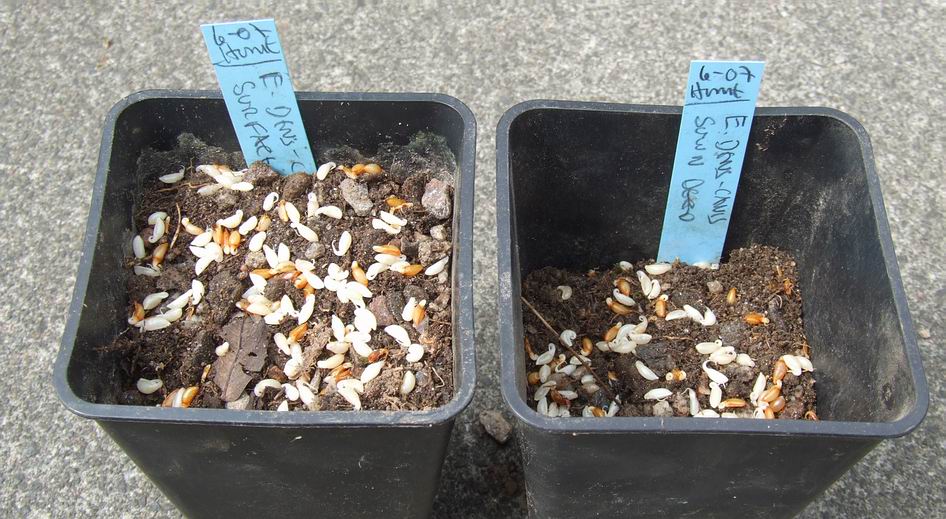
Erythronium dens canis seed sown
As part of my on going experiments to discover which seeds benefit form being sown deeply I am doing a trial with half of these seeds being sown in the normal way on the surface of a pot -just covered with a centimetre or so of 6mm gravel- and the other half being sown half way down the pot.
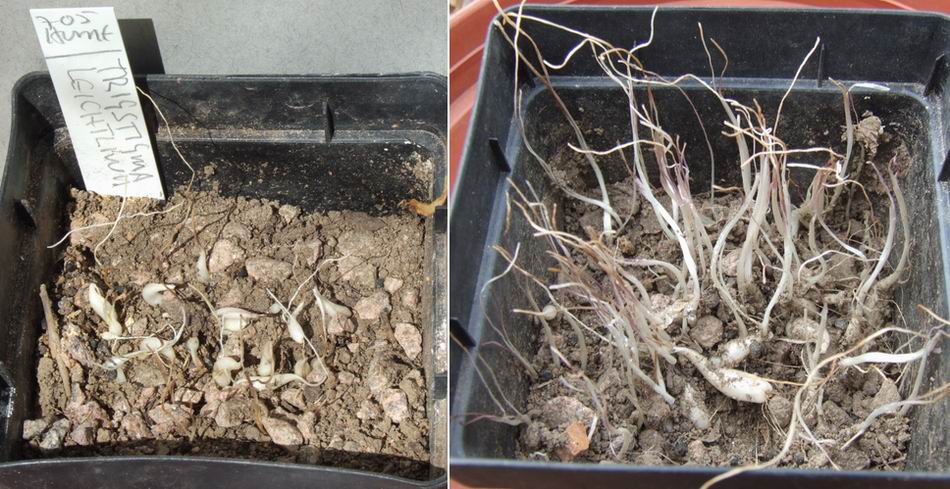
Tristagma seedlings
Here is the result of a similar trial I did last year when I sowed half of these Tristagma leichtlinii seedlings on the surface and the other half were sown at depth. The left hand pot shows the surface sown bulbs which are much smaller than the ones on the right which were sown half way down the pot. The benefit of being sown deep is that the young bulbs are in a much more stable environment where they are not subjected to the same fluctuations of temperature and moisture levels that the ones near the surface are. So, if it is an advantage to be sown deeply, then why don't I sow them all that way? I have to find out which seeds will germinate when sown deep - in my trial I have never managed to germinate any fritillaria seeds that were sown deeply leading me to speculate that they must require some exposure to light to germinate.
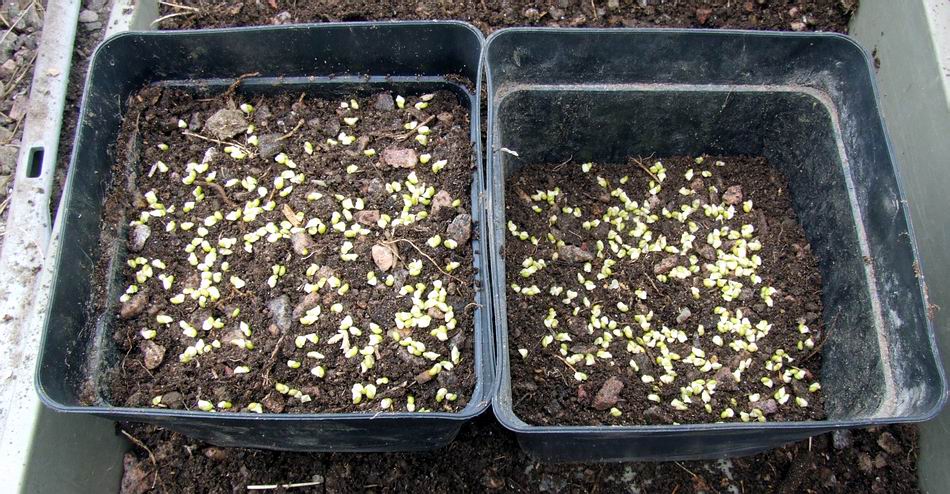
Scoliopus bigelovii seeds
A similar trial here of Scoliopus bigelovii seeds.

Aphids
Just a reminder to watch out for one of the enemies - aphids are about in big numbers and they need controlling.
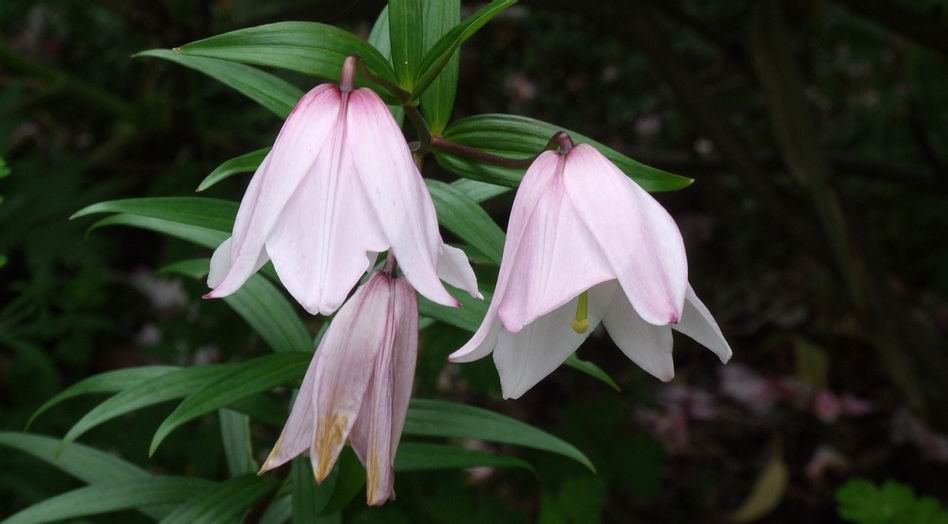
Lilium mackliniae
Aphids are especially bad news for many of the beautiful lilies and nomocharis that seem to be very susceptible to viruses which are spread by aphids. I am convinced that many of the plants we grow are infected by a virus but they can live with it and do not show any of the symptoms while the delicate species of lilies and primulas succumb very quickly once infected.
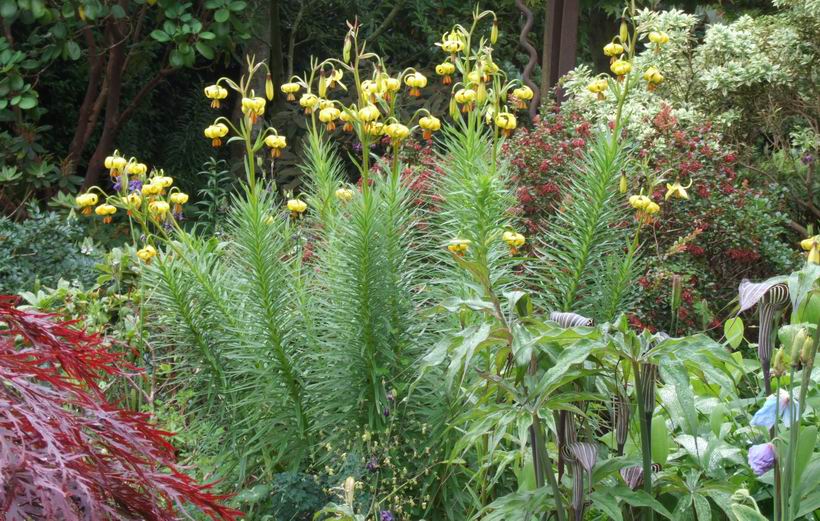
Lilium and arisaema
In the garden I have big stands of lilies and many arisaemas appearing like the one in the bottom right hand corner of this picture.
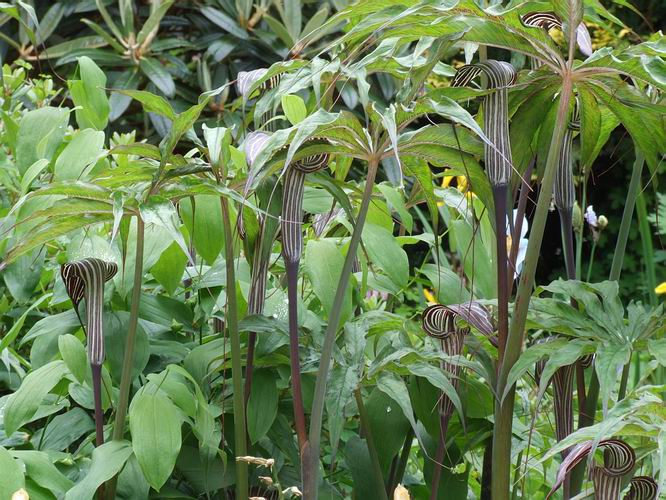
Arisaema ciliatum
I was a bit worried some weeks back that I had lost many of our arisaema plants as they were not appearing. I worry about them every year but I should have learned by now that they are late in poking through the ground and indeed a check back over the last four years of bulb logs reassured me I was just expecting them too soon in the season. As I have left the seeds to self sow for a few years around this plant we now have a positive forest of Arisaema ciliatum in all stages from 1st year seedlings to fully mature flowering stems. It would seem that they start to flower in their third year from seed when naturalising in the garden.
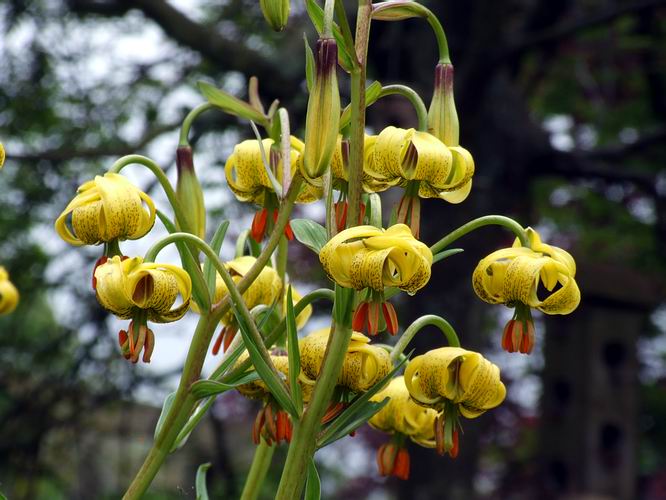
Lilium pyrenaicum
The lily is one of the forms of Lilium pyrenaicum which I think is beautiful flower with a nice scent however Maggi thinks it stinks and despite enjoying scented flowers does not like this smelly one. If it suddenly does not appear one year I will know the reason why!
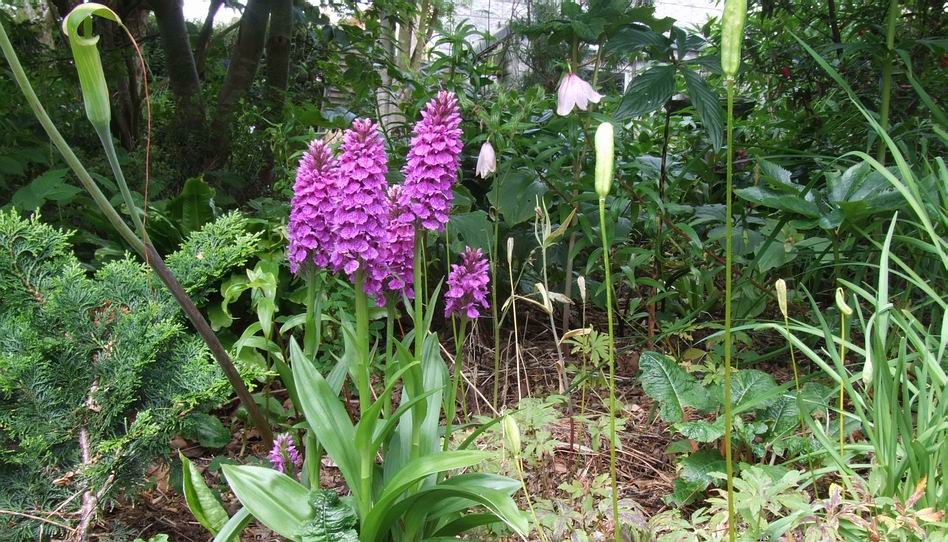
Dactylorhiza
I do not want to boast, in case I talk too soon, but all our Dactylorhizas are looking very healthy this year. I believe they are among the most sensitive plants to the growing conditions and by that I mean a healthy soil with a full range of nutrients and minerals. Their health is associated with various tiny fungus that grow in partnership with them - the fungus breaks down the nutrients and minerals in the soil so that the plants can absorb them while the fungus benefits by getting some of those nutrients back through the plants root system. I also think that these mycorhizmal fungi help the plants fend off other harmful fungal attacks. If your garden soil has become deprived of these minerals and nutrients, through years of plant growth removing them, and you have not found a way to replace them then your plants will start to struggle and suffer.
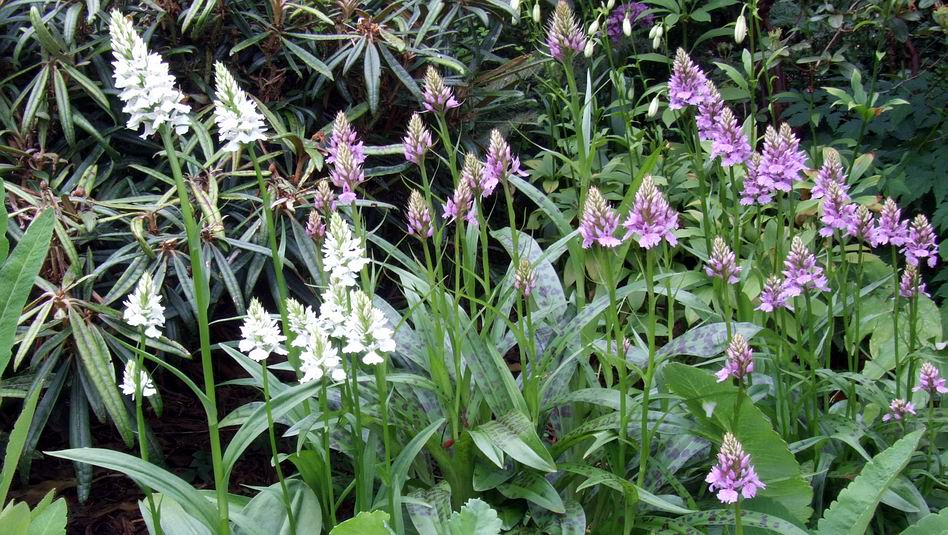
Eskimo Nell
The white Dactylorhiza 'Eskimo Nell' on the left is a very delicate grower, probably the genetic mutation that makes it white also leaves it weaker, and it is very susceptible to fungal attacks so it is especially important to watch the health of your soil in both your garden and containers.
I will continue to follow the example of those 19th century quarry workers and spread granite dust on my garden as well as trying out this volcanic rock dust in an attempt to keep my soil healthy and my plants growing well.
^ back to the top ^
|

